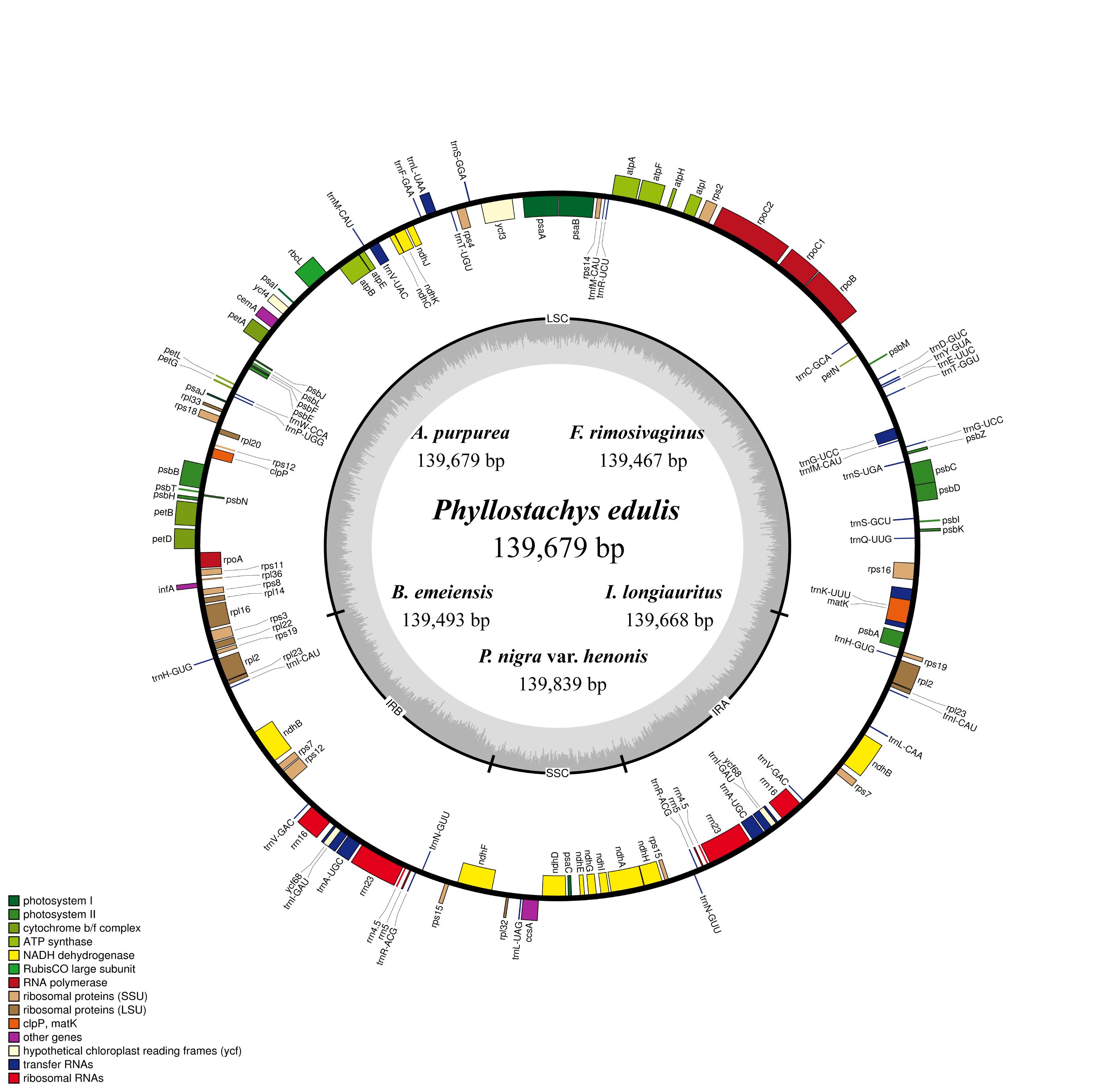Bambusoideae which encompasses approximately 1000 species around the world is the only subfamily that contains woody members in the grass family, Poaceae. Temperate woody bamboos are highly diverse in East Asia with varied habits and complex morphological features and are notorious for being taxonomically difficult and having a complicated taxonomy. As next-generation sequencing techniques have revolutionized DNA sequencing via high-throughput capabilities, chloroplast phylogenomics could be alternative choice for resolving difficult phylogenies.
Recently, researches of Molecular Phylogenetics and Biogeography Group in Kunming Institute of Botany completed six woody bamboos chloroplast genomes using Illumina sequencing. Comparative genomic studies of eight bamboo chloroplast genomes (plus two published) indicated that chloroplast genomes in Bambusoideae were rather conserved and perfectly syntenic. The successful recovery of complete chloroplast genomes have verified the feasibility and reliability of using the next-generation sequencing platform to sequencing chloroplast genomes isolated through modified method of high ionic strength in combination with low pH buffer.
Phylogenetic studies based on 24 complete chloroplast genomes of Poaceae provided a strong support for the sister relationship between Bambusoideae and Pooideae within the BEP clade. Tropical woody bamboos and temperature woody bamboos were proved to be monophyletic respectively. Within temperature woody bamboos, the relationships were improved relative to previous studies. Phylogenetic analyses were performed based on four data sets in all and the result from the complete chloroplast genomes was proved to be better. Unambiguously possibly informative exon insertions/deletions (indels) were identified and mapped to the tree. Of the 45 indels, 25 were inferred to be synapomorphies and the others may be homoplasies resulted from parallel evolution or back mutation. In all, phylogenomics based on whole cp genome could be used to resolve major relationships within Bambusoideae.
This study has been published on May 31, 2011 in PLoS ONE, entitled ‘High-throughput sequencing of six bamboo chloroplast genomes: phylogenetic implications for temperate woody bamboos (Poaceae: Bambusoideae).
(http://www.plosone.org/article/info%3Adoi%2F10.1371%2Fjournal.pone.0020596)





